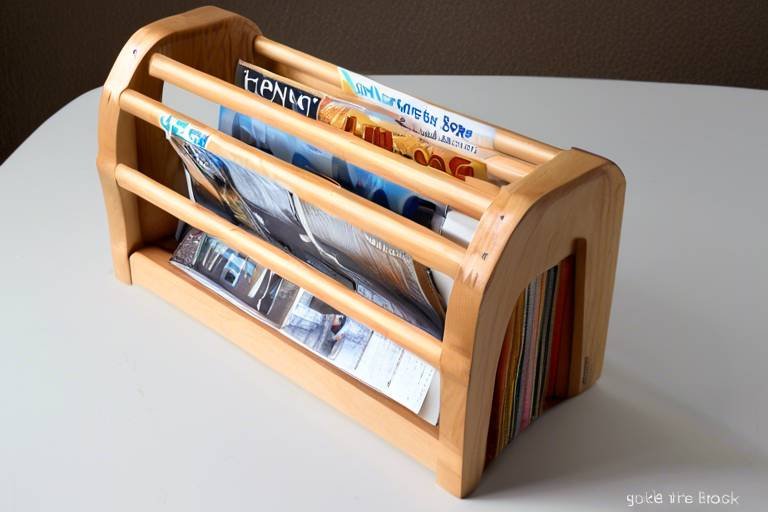Woodworking Projects for Kids to Try: Safe and Fun
Woodworking is not just a hobby; it's an adventure waiting to unfold! Imagine the excitement in a child's eyes as they transform a simple piece of wood into a masterpiece. Engaging in woodworking projects allows children to unleash their creativity while also developing essential skills. From measuring and cutting to sanding and painting, each step in a woodworking project serves as a building block for their confidence and dexterity. Not only does woodworking foster fine motor skills, but it also encourages problem-solving and critical thinking. Have you ever wondered how a simple project can lead to such profound personal growth? It’s like planting a seed in the garden of their minds, nurturing it until it blooms into a beautiful creation.
But let’s be real, safety is the name of the game when it comes to woodworking with kids. Parents and educators need to ensure that the projects are safe and age-appropriate. Luckily, there are plenty of projects that are both fun and safe for kids to tackle. Think about it: a wooden birdhouse or a simple toy car isn’t just a project; it’s a journey of discovery. As they saw, hammer, and paint, they’re not just creating—they’re learning about the world around them. Plus, there's nothing quite like the joy of seeing their faces light up when they finish a project. It’s a moment of pride that they will carry with them.
In this article, we’ll explore a variety of woodworking projects that are perfect for kids. We’ll dive into the essential tools they’ll need, safety guidelines to keep in mind, and tips for encouraging creativity throughout the process. So, whether you’re a parent looking to spend quality time with your child or an educator wanting to introduce woodworking in the classroom, you’re in the right place. Are you ready to embark on this exciting woodworking journey? Let’s get started!

Introduction to Woodworking for Kids
Woodworking is not just a fun pastime; it’s a fantastic way for children to develop essential skills while expressing their creativity. Imagine your child, hammer in hand, shaping a piece of wood into something uniquely theirs. The act of creating something from scratch can be incredibly fulfilling, and it instills a sense of pride that is hard to replicate in other activities. But why is woodworking so beneficial for kids?
First off, woodworking helps in enhancing fine motor skills. As children learn to measure, cut, and assemble pieces of wood, they are exercising their hand-eye coordination and dexterity. These skills are crucial not just for woodworking, but for numerous everyday tasks. Additionally, woodworking encourages problem-solving. When faced with a challenge, like how to fit two pieces together, kids learn to think critically and find solutions, a skill that will serve them well in all areas of life.
Moreover, engaging in woodworking projects fosters creativity. Kids can personalize their creations, whether it's painting a birdhouse or designing their own wooden toys. This freedom of expression allows them to explore their artistic side while also learning to appreciate the beauty of handcrafted items. And let’s not forget the joy of crafting! The satisfaction of completing a project is something that can boost a child’s confidence immensely.
In addition to the hands-on skills, woodworking also teaches patience and perseverance. Not every project will go as planned, and that’s okay! Kids learn that mistakes are part of the learning process, and with each failure, they gain valuable experience. This resilience is a vital life lesson that extends far beyond woodworking.
So, how can you introduce your child to the world of woodworking? Start by creating a safe and inviting workspace. Ensure that they have access to the right tools and materials, and most importantly, provide guidance and encouragement. With your support, they can embark on a journey of creativity and skill development that will leave a lasting impact.
In summary, woodworking for kids is a multifaceted activity that nurtures creativity, problem-solving, and fine motor skills. It’s not just about making things; it’s about making memories and learning valuable lessons along the way. So, why not grab some wood and tools and get started on this exciting adventure?
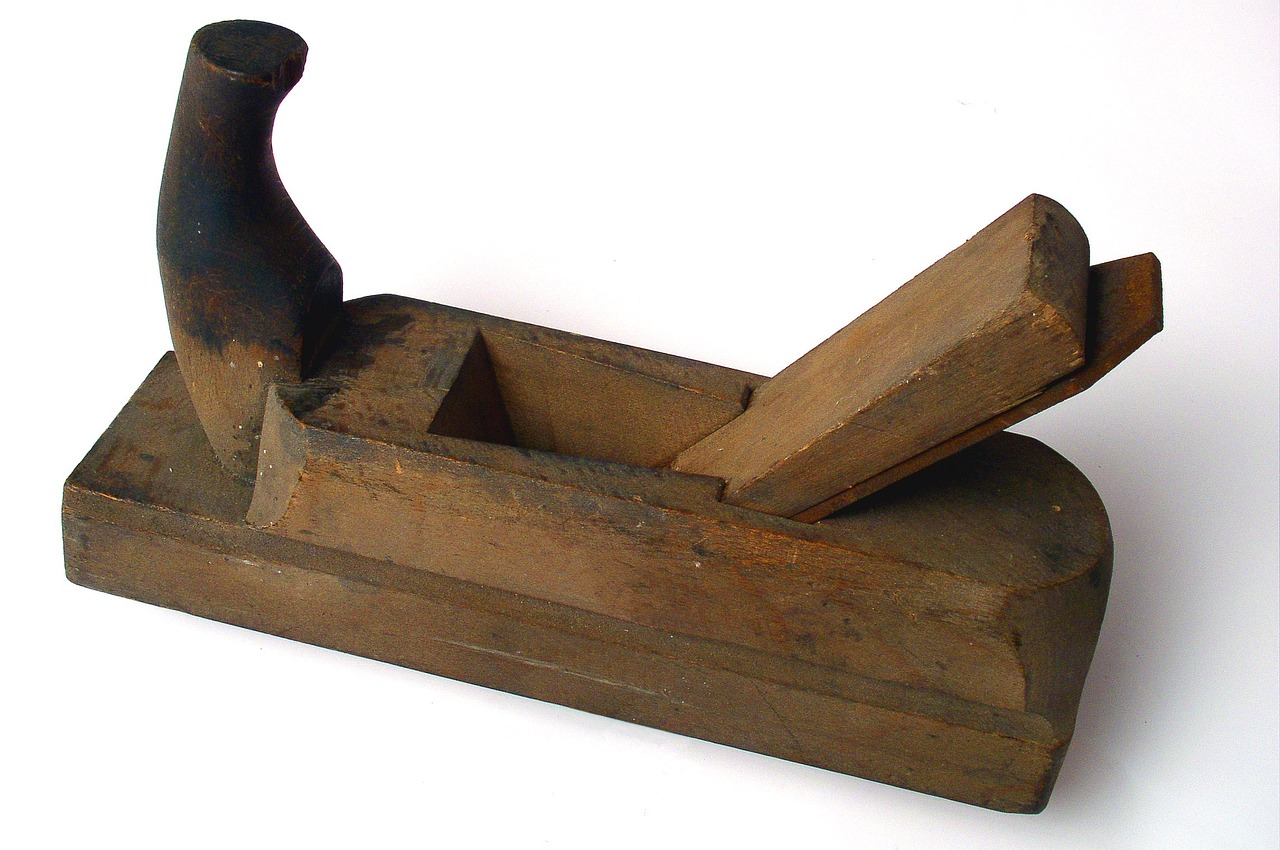
Essential Tools for Young Woodworkers
When it comes to woodworking, having the right tools is like having a treasure chest full of possibilities. For kids, using age-appropriate tools not only ensures safety but also enhances their confidence and skill development. Just imagine a young woodworker, eyes sparkling with excitement, ready to create something amazing! To make this dream a reality, we need to equip them with tools that are both safe and effective.
First and foremost, hand tools are your best friends in the woodworking world for young learners. Unlike power tools, which can be intimidating and potentially dangerous, hand tools allow kids to engage with the material more directly. They can feel the grain of the wood, understand how to apply pressure, and develop their hand-eye coordination. Some essential hand tools include:
- Child-sized saws - Perfect for making precise cuts without overwhelming them.
- Clamps - These help hold the wood in place, teaching kids the importance of stability during work.
- Sandpaper - A great way for kids to learn about finishing touches while smoothing out rough edges.
- Hand drills - Simple and safe, these allow kids to create holes without the need for electricity.
While hand tools are fantastic for beginners, it’s essential to teach kids about power tools as they gain more experience. However, this should only be done under close supervision and with proper safety gear. Tools like a cordless drill or a jigsaw can be introduced gradually, emphasizing safety and respect for the tool's power.
Before diving into any project, it’s crucial to instill a strong sense of safety in young woodworkers. Here are some basic guidelines that should be emphasized:
- Always wear safety goggles to protect the eyes.
- Keep fingers clear of cutting edges and moving parts.
- Ensure the workspace is clean and free of clutter.
- Never rush; take time to understand how each tool works.
By following these guidelines, kids can enjoy their woodworking journey while minimizing risks. It's all about creating a fun and safe environment where they can express their creativity without fear.
Once the kids are equipped with their tools, it's also important to teach them how to care for them. Just like a gardener tends to their plants, young woodworkers should learn to maintain their tools. Keeping tools clean and stored properly not only extends their lifespan but also ensures safety during use. Simple maintenance tasks include:
- Wiping down tools after each use to remove sawdust and moisture.
- Checking for any signs of damage or wear before starting a new project.
- Storing tools in a designated area to prevent accidents.
By instilling these habits early on, kids will not only become responsible woodworkers but will also develop a sense of pride in their tools and creations.
The type of wood selected for a project can greatly affect the overall experience. For young woodworkers, it's advisable to start with softer woods like pine or cedar, which are easier to cut and shape. These woods are forgiving and allow for mistakes, making them perfect for beginners. As they gain confidence, they can explore harder woods and even reclaimed materials, which can spark discussions about sustainability and creativity.
In conclusion, equipping young woodworkers with the right tools, teaching them safety, and instilling good maintenance habits creates a strong foundation for a lifelong love of crafting. So, gather those tools and let the creativity flow!
Q: What age is appropriate for kids to start woodworking?
A: Generally, kids can start woodworking as early as 5 years old, focusing on simple hand tools and projects.
Q: What safety gear should kids wear?
A: Kids should wear safety goggles, dust masks, and sometimes ear protection, especially when using power tools.
Q: Can woodworking help with my child's development?
A: Absolutely! Woodworking enhances fine motor skills, boosts creativity, and teaches problem-solving.
Q: How can I encourage my child to be creative in woodworking?
A: Allow them to choose their projects, decorate their creations, and explore different wood types and tools.

Hand Tools vs. Power Tools
When it comes to woodworking, one of the first decisions you'll face is whether to use hand tools or power tools. Both have their unique advantages and challenges, especially for kids just starting their woodworking journey. Hand tools, such as saws, hammers, and chisels, provide a more tactile experience. They allow children to feel the wood, understand its texture, and develop a deeper connection to the craft. Using hand tools can be like painting with a brush; it gives you control and precision, making every cut and carve a personal expression of creativity.
On the other hand, power tools, like drills and electric saws, can make tasks quicker and easier. They can be likened to using a computer for art—efficient and powerful but sometimes less personal. While power tools can be intimidating, they also open up a world of possibilities for more complex projects. However, they require a higher level of supervision and safety precautions, especially for young woodworkers. It's essential to weigh the pros and cons of each type of tool before diving into a project.
For beginners, especially kids, hand tools are often recommended for several reasons:
- Safety: Hand tools are generally safer for children, as they don’t involve electricity or high speeds.
- Skill Development: Using hand tools helps kids develop essential skills, such as hand-eye coordination and patience.
- Creativity: The slower pace of hand tools allows for more thoughtful design and creativity.
However, it's important to recognize that power tools have their place in woodworking as well. They can be introduced gradually as children gain experience and confidence. For instance, a child who has mastered basic hand tool skills might be ready to handle a drill under supervision, thus expanding their woodworking capabilities. The key is to ensure that children are comfortable and confident with whichever tools they are using.
In conclusion, both hand tools and power tools have their merits, but for young woodworkers, starting with hand tools can provide a solid foundation. As they grow in skill and confidence, introducing power tools can enhance their woodworking experience, allowing for more complex and exciting projects. Remember, the goal is to foster a love for crafting while ensuring safety and enjoyment throughout the process!
Q: What age is appropriate for kids to start woodworking?
A: Children as young as 5 can start with simple hand tools under supervision. As they grow older and more responsible, they can gradually use more complex tools.
Q: How can I ensure my child is safe while woodworking?
A: Always supervise your child, teach them about tool safety, and ensure they wear appropriate safety gear, such as goggles and gloves.
Q: What are some beginner-friendly woodworking projects?
A: Simple projects like birdhouses, wooden toys, and picture frames are excellent starting points for young woodworkers.

Safety Guidelines for Using Tools
When it comes to woodworking, ensuring safety is not just a precaution; it's a necessity. Kids are naturally curious and eager to explore, but with tools involved, it’s essential to establish some ground rules. First and foremost, adult supervision is crucial. Even if a child feels confident, having an adult nearby can provide guidance and immediate assistance if needed. This doesn’t mean hovering over them constantly, but rather being available to answer questions and provide support.
Before diving into any project, it’s important to teach children about the specific tools they will be using. Each tool has its own set of risks and handling techniques. For example, while a hammer might seem harmless, improper use can lead to accidents. Therefore, kids should be taught to use tools with both hands when necessary, maintaining a firm grip and being aware of their surroundings. Always remind them to keep their fingers away from cutting edges and to focus on their task without distractions.
Another critical aspect of safety is wearing appropriate protective gear. Safety goggles are a must to protect their eyes from flying debris, while gloves can help prevent splinters and cuts. Additionally, it’s wise to have a first aid kit nearby, just in case someone gets a minor injury. Accidents can happen, but being prepared can make all the difference.
Here are some essential guidelines to keep in mind:
- Always use tools as intended: Misusing tools can lead to accidents.
- Keep the workspace tidy: Clutter can cause trips and falls, so encourage kids to clean up as they work.
- Check tools before use: Ensure that tools are in good condition and that there are no loose parts.
- Use the right tool for the job: This not only makes the task easier but also safer.
Lastly, instilling a sense of responsibility in young woodworkers is vital. Teach them to respect their tools and understand that safety is a priority. By fostering an environment where safety is part of the crafting process, you help them build not only their skills but also a lifelong appreciation for woodworking.

Tool Maintenance Tips
Maintaining tools is not just about keeping them shiny and new; it's about ensuring safety and efficiency for young woodworkers. Just like a chef wouldn’t use a dull knife, kids should learn the importance of taking care of their tools to make their woodworking experience smooth and enjoyable. Regular maintenance can prevent accidents and prolong the life of the tools, making it a crucial aspect of any woodworking project.
First and foremost, it's essential to keep tools clean. After each use, kids should wipe down their tools to remove dust, sap, and any wood shavings. This simple act can prevent rust and ensure that tools work effectively. For example, if they’ve been using a saw, a quick wipe with a damp cloth followed by a dry one can keep it in prime condition. Additionally, using a small brush to clear out any debris from crevices is a great habit to develop.
Another important maintenance tip is to regularly check for any signs of wear and tear. Kids should be taught to inspect their tools before each use. Are the blades sharp? Are there any cracks in the handles? If they spot any issues, it's crucial to address them immediately. For instance, a dull blade can be dangerous as it requires more force, increasing the risk of slips and accidents. A simple way to keep blades sharp is to use a sharpening stone or file, which can be a fun and educational task for kids to learn.
Storage is also a key factor in tool maintenance. Tools should be stored in a dry place, away from moisture, which can cause rust. A dedicated toolbox or a pegboard can help keep tools organized and easily accessible. Kids can personalize their storage spaces, which makes it even more fun! For example, they can label their toolboxes or paint them in their favorite colors, turning maintenance into a creative project.
Lastly, kids should understand the importance of using tools correctly. Each tool has a specific purpose, and using it for anything else can lead to damage. Parents and educators can create a simple chart that outlines the correct usage for each tool, which kids can refer to as they work. This not only promotes safety but also reinforces the learning aspect of woodworking.
In summary, teaching kids proper tool maintenance is like giving them a secret recipe for success in woodworking. By instilling these habits early on, we not only ensure their safety but also cultivate a sense of responsibility and pride in their work.
- What is the best way to clean woodworking tools? It's best to wipe them down after each use to remove dust and debris, and to use a brush for hard-to-reach areas.
- How often should tools be sharpened? This depends on usage, but a good rule of thumb is to check the sharpness before each project.
- Can kids use power tools? Generally, it is safer for kids to start with hand tools. If power tools are used, they should always be supervised by an adult.
- What type of storage is best for woodworking tools? A dry, organized toolbox or pegboard is ideal for keeping tools safe and accessible.
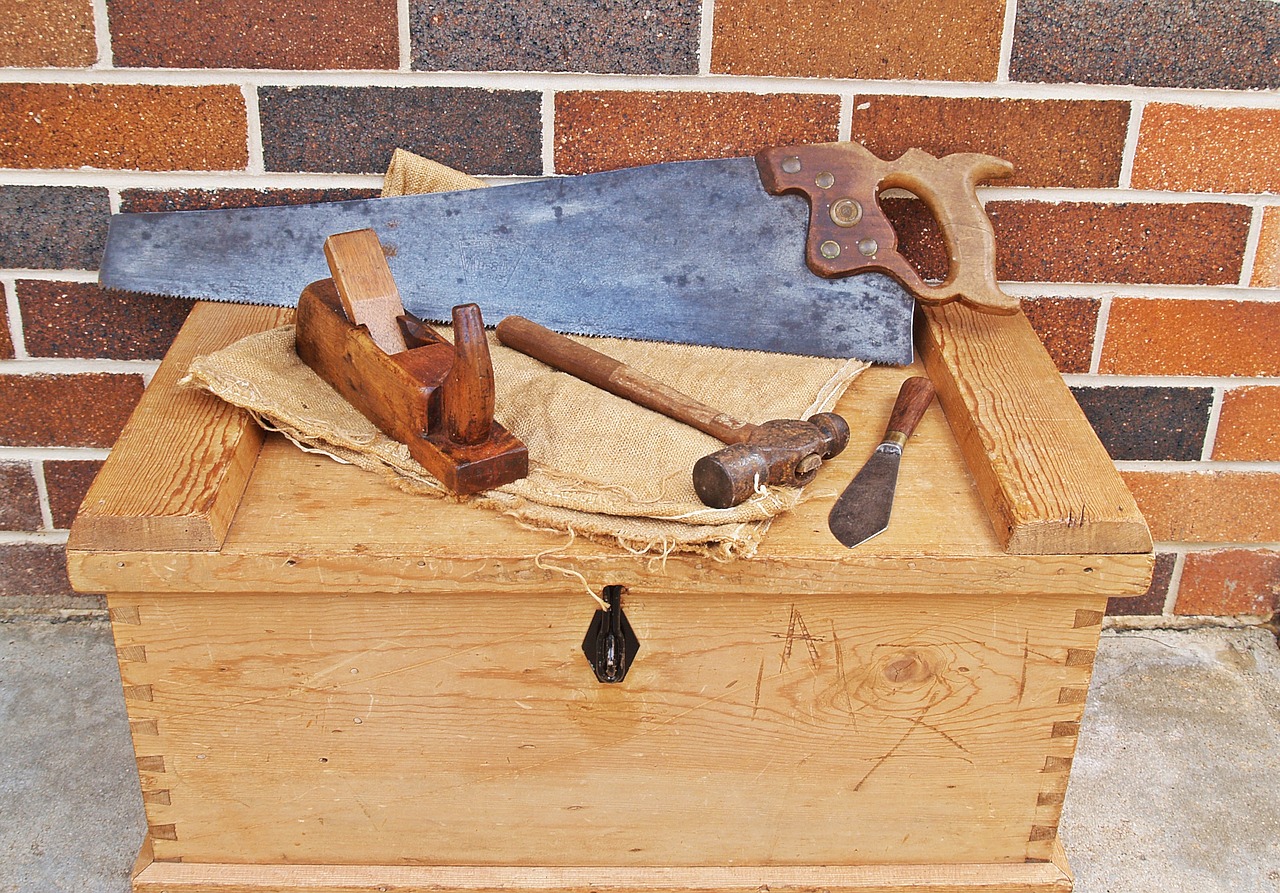
Choosing the Right Wood for Projects
When it comes to woodworking, selecting the right type of wood is a crucial step that can make or break a project. Just like choosing the right ingredients for a recipe, the type of wood you pick will influence not only the final product's appearance but also its durability and ease of working with it. For kids, it's essential to choose wood that is safe, easy to handle, and affordable. Some of the best options include pine, cedar, and plywood.
Pine is often the go-to choice for beginners. It’s a softwood, making it easy to cut and shape. Plus, it’s readily available at most hardware stores and is budget-friendly. Cedar, on the other hand, is slightly more expensive but has a beautiful natural aroma and is naturally resistant to decay, which can be a great advantage for outdoor projects like birdhouses. Plywood is another excellent option, especially for larger projects. It’s made from layers of wood glued together, providing strength and stability while being lightweight.
When helping your child choose the right wood, consider the following factors:
- Project Type: Different projects may require different types of wood. For instance, a simple birdhouse might work well with pine, while a sturdy toy box may need the durability of plywood.
- Finish: Some woods take paint and stain better than others. If your child wants to personalize their project with colors, consider how the wood will respond to finishing.
- Availability: Ensure that the wood is easy to find in your local area. This makes it easier for you and your child to gather materials without hassle.
Ultimately, the goal is to make woodworking a fun and educational experience. By choosing the right wood, you'll not only set your child up for success but also spark their interest in crafting. Encourage them to explore different types and even experiment with scraps to see how each one behaves. This exploration can lead to newfound creativity and skills that will last a lifetime!
Q: What type of wood is safest for kids to use?
A: Softwoods like pine and cedar are generally safe and easy for kids to work with. They are less likely to splinter and are easier to cut.
Q: Can kids use power tools?
A: It's best to start with hand tools for younger kids. As they grow older and gain more experience, you can introduce them to power tools with strict supervision.
Q: How can I help my child choose a woodworking project?
A: Discuss their interests and what they would like to create. Start with simple projects that match their skill level to build confidence.
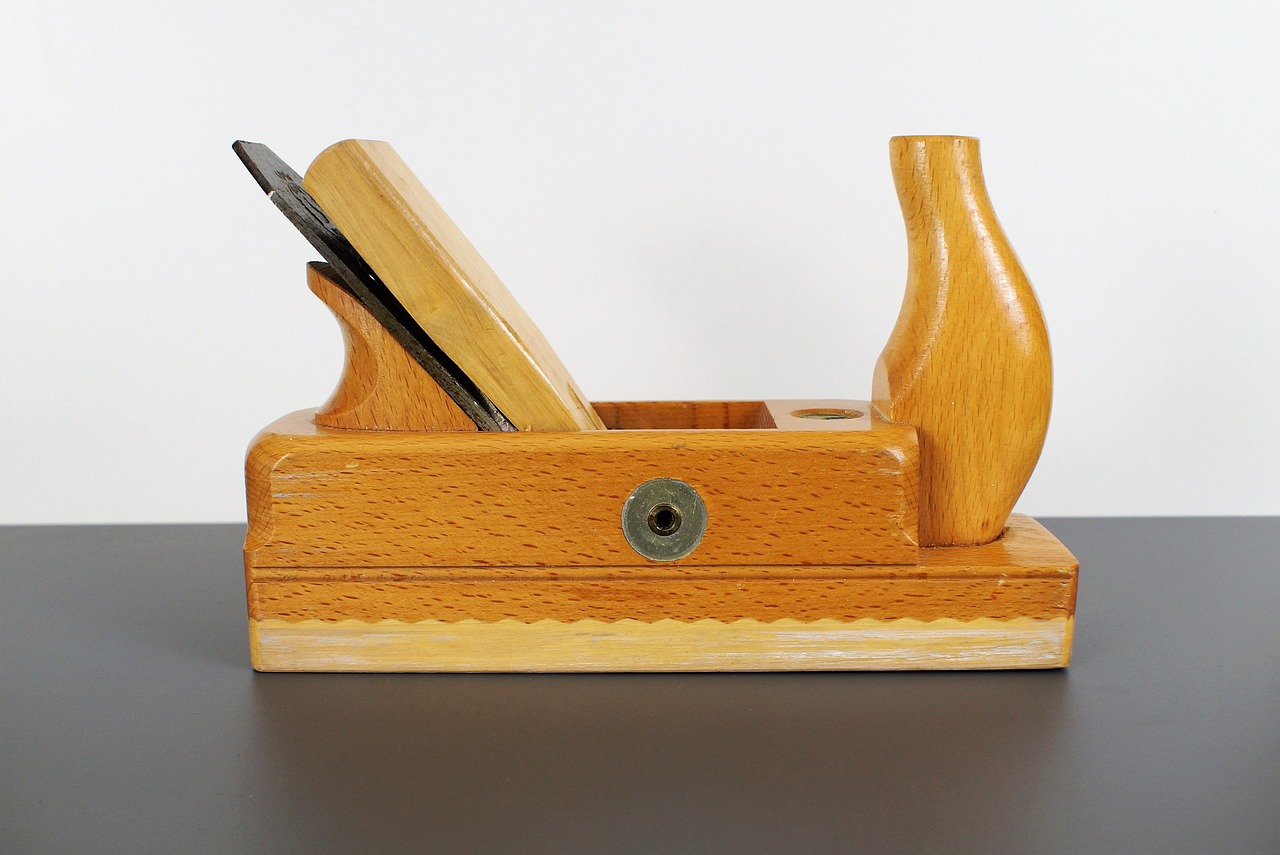
Simple Woodworking Projects for Beginners
When it comes to introducing kids to the wonderful world of woodworking, starting with simple projects is key. Not only do these projects ignite a sense of accomplishment, but they also lay the foundation for more complex skills in the future. Imagine the joy on a child's face when they create something with their own hands! In this section, we’ll dive into a few engaging projects that are perfect for young woodworkers, ensuring they have a fun and educational experience.
One of the most beloved beginner projects is building a birdhouse. This classic woodworking endeavor allows children to connect with nature while honing their crafting skills. To create a simple birdhouse, kids will need a few pieces of wood, nails, and some basic tools. The steps are straightforward:
- Gather materials: Choose untreated wood such as pine or cedar, which is safe for birds.
- Cut the wood pieces: Typically, you'll need a base, four walls, and a roof. A parent or adult can assist with this part to ensure safety.
- Assemble the birdhouse: Kids can nail the pieces together, learning about angles and structure.
- Decorate: Let creativity flow! Kids can paint or decorate their birdhouse to attract feathered friends.
- Find a perfect spot: Help them choose a location in the yard that’s safe and visible.
Another exciting project is creating wooden toys. Who doesn’t love a classic wooden car or a simple puzzle? These toys are not only fun to make but also provide endless playtime. For instance, making a wooden car involves cutting out a basic shape, sanding the edges, and then adding wheels. Kids can personalize their toys by painting or adding stickers, making each creation unique.
Here's a quick overview of some simple wooden toy ideas:
| Project | Materials Needed | Skill Level |
|---|---|---|
| Wooden Cars | Wood, wheels, paint | Beginner |
| Puzzles | Wood, jigsaw, paint | Intermediate |
| Animal Figures | Wood, paint, brushes | Beginner |
These projects not only foster creativity but also encourage problem-solving and critical thinking. As children work through the steps of these projects, they learn to plan, execute, and adjust their ideas, which is incredibly valuable in their development. Plus, the satisfaction of seeing a finished product brings a sense of pride that can’t be matched!
As they embark on these woodworking adventures, it’s important to remind kids that mistakes are part of the learning process. Encourage them to experiment and think outside the box. Who knows? Their next creation could be a masterpiece!
Q: What age is appropriate for kids to start woodworking?
A: Generally, children aged 5 and up can start with simple projects under adult supervision. Always assess the child's maturity and ability to follow safety guidelines.
Q: What tools should I provide for my child?
A: Start with basic hand tools like a small hammer, child-safe saw, and sandpaper. Avoid power tools until they are older and more experienced.
Q: How can I ensure safety during woodworking?
A: Always supervise your child, teach them the proper use of tools, and emphasize the importance of wearing safety gear, such as goggles and gloves.
Q: Can woodworking projects be incorporated into educational activities?
A: Absolutely! Woodworking can teach math (measuring), science (understanding materials), and art (designing). It’s a holistic approach to learning!

Birdhouses
Building a birdhouse is not just a fun woodworking project; it's a fantastic way for kids to engage with nature and learn about the birds that might visit their backyard. Imagine the excitement on your child's face when they see a feathered friend taking residence in a home they crafted with their own hands! This project is perfect for beginners and can be tailored to suit various skill levels, making it an ideal choice for family bonding and creative expression.
To get started, you’ll need some basic materials. Typically, a simple birdhouse can be made from untreated wood like pine or cedar, which is both safe and easy to work with. The dimensions can vary, but a standard birdhouse might measure around 6 inches wide, 6 inches deep, and 8 inches high. Don't worry if you're not a woodworking expert; this project is more about the experience than perfection.
Here’s a simple overview of the steps involved in creating a birdhouse:
- Gather Materials: Start with wood panels, nails or screws, wood glue, and paint or wood stain for decoration.
- Cut the Wood: Cut pieces according to your chosen dimensions. Safety first! Ensure kids wear protective goggles during this step.
- Assemble the House: Use nails or screws to attach the sides, bottom, and roof. A helper can hold the pieces while your child secures them.
- Drill an Entrance Hole: Make a small entrance hole, about 1.5 inches in diameter, to attract smaller birds like chickadees or wrens.
- Decorate: Let your child unleash their creativity by painting or decorating the birdhouse. This is where they can really make it their own!
- Mount or Hang: Finally, choose a suitable spot to hang or mount the birdhouse, ideally in a sheltered area away from predators.
Encouraging kids to decorate their birdhouses can also enhance their creativity. They can use non-toxic paints, stickers, or natural materials like leaves and twigs to give their birdhouse a unique flair. The process of painting and personalizing the birdhouse allows children to express their artistic side while also learning about the importance of aesthetics in design.
After the birdhouse is complete, it’s important to teach kids about the best practices for placing it. A good location is typically between 5 to 10 feet off the ground, facing away from prevailing winds. This not only protects the birds from harsh weather but also gives them a sense of security. Encourage your child to observe the birdhouse over time, noting any visitors that come by. It’s a great way to instill a sense of responsibility and connection to the environment.
In conclusion, building a birdhouse is a rewarding project that combines learning, creativity, and a touch of nature. It’s an experience that kids will cherish, and it opens up discussions about wildlife, habitats, and the importance of caring for our feathered friends. So gather those materials, roll up your sleeves, and get ready for a fun-filled woodworking adventure!
Q: What type of wood is best for building a birdhouse?
A: Untreated pine or cedar is ideal for birdhouses, as they are safe for birds and easy to work with.
Q: How can I ensure the birdhouse is safe for birds?
A: Make sure to use non-toxic paints and sealants, and avoid sharp edges that could harm the birds.
Q: When is the best time to put up a birdhouse?
A: Late winter or early spring is the best time to install a birdhouse, as many birds are looking for nesting sites during this period.

Wooden Toys
Creating can be a delightful experience for children, blending fun with education in a way that few other activities can. Imagine the joy on a child's face as they craft their very own toy, pouring their creativity into every cut and shape. This hands-on experience not only fosters a sense of accomplishment but also teaches valuable skills like problem-solving and patience. From simple cars to intricate puzzles, the world of wooden toy-making is vast and inviting.
One of the best aspects of making wooden toys is the opportunity for personalization. Kids can choose colors, shapes, and designs that reflect their unique personalities. For instance, a child can design a car in their favorite color or add stickers that represent their favorite characters. This level of creativity helps children invest emotionally in their projects, making the final product even more special. When they play with their handmade toys, they’re not just playing; they’re reliving the joy of creation.
To get started, here are a few fun and simple wooden toy ideas that kids can try:
- Wooden Cars: Simple to make and fun to race! Kids can use small blocks of wood, wheels, and axles to create their own unique cars.
- Puzzles: Kids can cut shapes out of wood to create puzzles that challenge their friends and family. These can be painted or left natural for a rustic look.
- Animal Figures: Children can carve or shape wood into their favorite animals, allowing for imaginative play and storytelling.
These projects not only provide a sense of accomplishment but also encourage teamwork if done in groups. For example, siblings or friends can collaborate on a larger project, learning to communicate and share ideas effectively. The process of creating wooden toys is just as important as the final product, as it teaches kids how to work together and support one another.
Moreover, making wooden toys allows children to understand the value of recycling and using sustainable materials. Parents can encourage kids to use leftover wood scraps from previous projects, teaching them about resourcefulness and the importance of minimizing waste. This not only nurtures their creativity but also instills a sense of responsibility towards the environment.
As kids engage in woodworking, they also develop fine motor skills and hand-eye coordination. The act of sanding, painting, and assembling requires concentration and dexterity. These skills are crucial not just in woodworking but in many other areas of life, from academics to sports. By working on wooden toy projects, children are unknowingly preparing themselves for future challenges, all while having a blast!
In conclusion, woodworking projects like creating wooden toys are not just about crafting; they’re about building memories, developing skills, and fostering creativity. So, gather some wood, grab those tools, and let the adventure begin!
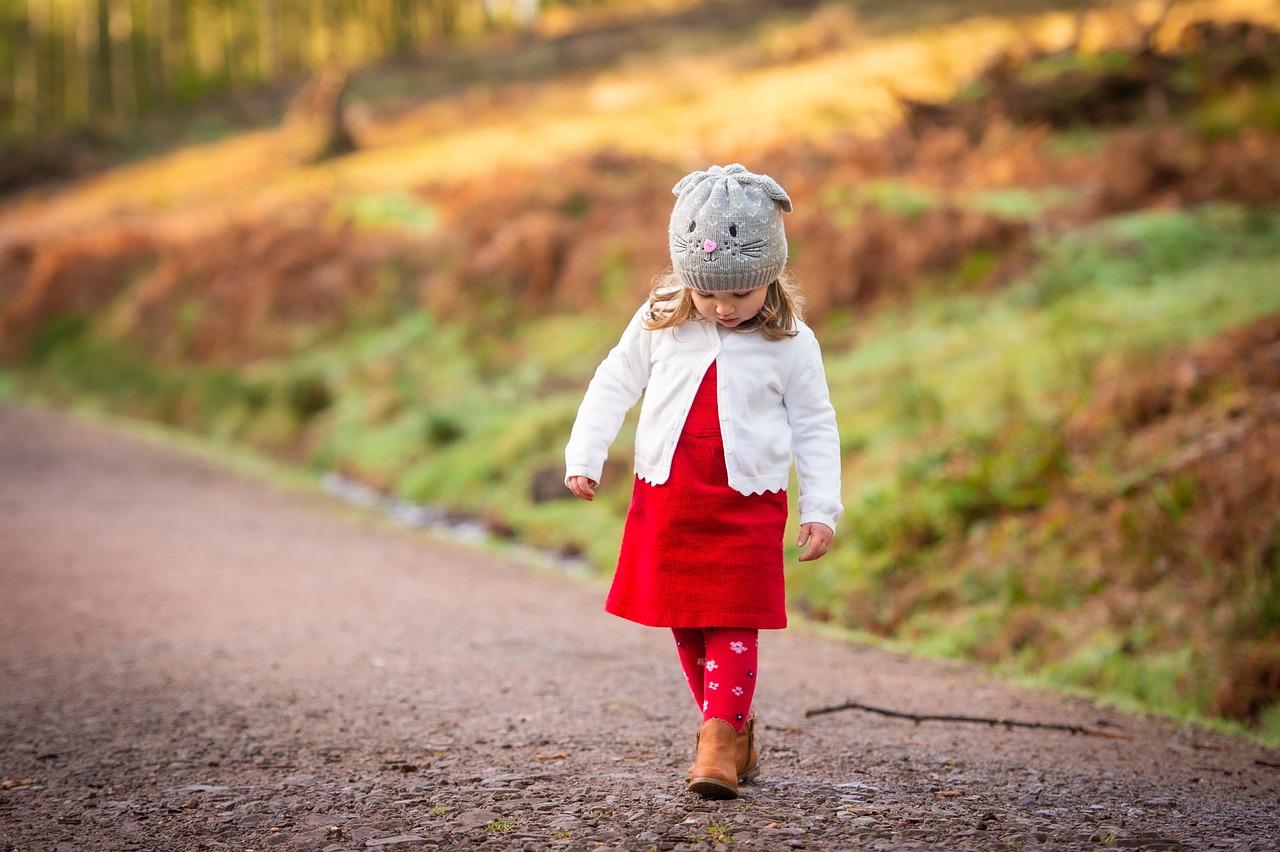
Encouraging Creativity Through Woodworking
Woodworking is not just about cutting and joining pieces of wood; it's a vibrant avenue for kids to unleash their creativity and express themselves. When children engage in woodworking, they embark on a journey where their imagination can run wild. Imagine a blank canvas, but instead of paint, they have a piece of wood waiting to be transformed into something unique. This process allows them to explore their ideas and bring them to life, fostering a sense of ownership and pride in their creations.
One of the best things about woodworking is that it encourages kids to think outside the box. They can personalize their projects in ways that reflect their personalities. For instance, if a child builds a birdhouse, they can choose colors, shapes, and decorations that resonate with them. This not only makes the project more enjoyable but also teaches them the importance of individuality and self-expression. As they navigate through the design and construction phases, they learn to make decisions and solve problems—skills that are invaluable in all aspects of life.
To further enhance creativity, parents and educators can create an environment that nurtures exploration. Here are some tips to encourage creativity in woodworking:
- Provide Diverse Materials: Offer a variety of wood types, colors, and textures. This variety can inspire kids to experiment with different combinations.
- Encourage Original Ideas: Let kids brainstorm their own project ideas instead of just following templates. This freedom can lead to innovative creations.
- Celebrate Mistakes: Teach children that mistakes are part of the learning process. Encourage them to view challenges as opportunities to improve their skills.
Moreover, collaborating on projects can significantly boost creativity. When kids work together, they can share ideas and techniques, leading to a richer learning experience. Think of it like a band—each child brings their unique instrument, and together they create beautiful music. This teamwork not only enhances their woodworking skills but also builds camaraderie and communication skills.
Additionally, integrating technology into woodworking can further inspire creativity. For example, using design software to visualize their projects before starting can help children see the possibilities of their creations. This combination of traditional woodworking with modern technology creates a dynamic learning environment that captivates young minds.
In conclusion, woodworking is a powerful tool for encouraging creativity in children. By providing the right materials, fostering a supportive environment, and encouraging collaboration, parents and educators can help children discover the joy of crafting. As they saw, carve, and assemble, they are not just making objects; they are crafting memories, building confidence, and developing skills that will last a lifetime.
Q1: What age is appropriate for kids to start woodworking?
A1: Children as young as 5 can start with simple projects using hand tools, while older kids can gradually move on to more complex tasks as they develop their skills.
Q2: What are the best types of wood for kids' projects?
A2: Softwoods like pine and cedar are great for beginners because they are easier to work with and less likely to cause injury.
Q3: How can I ensure my child is safe while woodworking?
A3: Always supervise your child, teach them the proper use of tools, and ensure they wear safety gear like goggles and gloves.
Q4: Can woodworking help with my child's development?
A4: Absolutely! Woodworking enhances fine motor skills, boosts creativity, and teaches problem-solving and critical thinking.
Frequently Asked Questions
- What age is appropriate for kids to start woodworking?
Generally, kids as young as 5 years old can start with simple woodworking projects using hand tools. It's all about supervision and ensuring they use age-appropriate tools. As they grow and develop more skills, they can tackle more complex projects!
- What are some safe woodworking tools for kids?
Some safe tools for young woodworkers include small hand saws, hammers, screwdrivers, and sandpaper. Hand tools are often recommended as they are easier to control and pose less risk than power tools. Always supervise your child when using any tool!
- How can I ensure my child’s safety while woodworking?
Safety is key! Make sure your child wears safety goggles, keeps their workspace tidy, and understands the importance of using tools properly. Teach them to always ask for help if they're unsure about something. Safety first, fun second!
- Can woodworking help develop skills in my child?
Absolutely! Woodworking enhances fine motor skills, boosts creativity, and teaches problem-solving. Plus, it provides a great sense of accomplishment when they complete a project. It’s like building confidence one wooden piece at a time!
- What types of wood are best for children’s projects?
Softwoods like pine and cedar are fantastic choices for kids. They are easier to cut and shape, making them perfect for beginner projects. Plus, they are lightweight and readily available, so your child can get started without much hassle!
- What simple projects can kids start with?
Some great starter projects include birdhouses, wooden toys, or simple picture frames. These projects are fun, educational, and allow kids to express their creativity while learning valuable woodworking skills!
- How can I encourage my child’s creativity in woodworking?
Encourage them to personalize their projects! Let them choose colors, designs, and decorations. Ask open-ended questions to spark their imagination, and celebrate their unique ideas. Remember, the sky's the limit when it comes to creativity!












